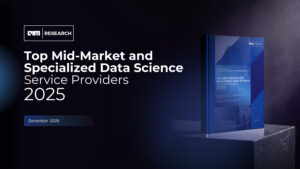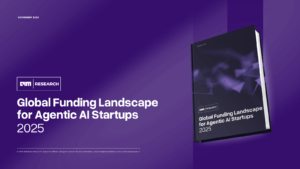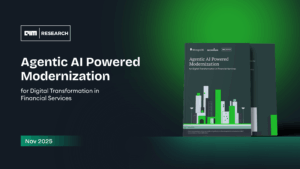The state of AI technologies in 2025 reflects a period of unprecedented change, where the pace of innovation is outstripping many organizations’ ability to adapt. As we move through this pivotal year, the key to success lies not in perfectly executing long-term plans, but in building the organizational capability to continuously evolve alongside technological advancement. The transformative vision many organizations had for 2030 is already being realized in 2025, forcing a fundamental rethink of how enterprises approach technological innovation and implementation.
As we progress through 2025, it’s becoming clear that the technological roadmaps created in the immediate post-pandemic period may have underestimated the pace of AI advancement. Organizations must now navigate a landscape where:
- Traditional software models are being rapidly displaced by AI-driven alternatives
- The line between human and machine capabilities is increasingly blurred
- The speed of innovation requires constant strategic adjustment
Top 10 Trending AI Technologies 2025
Here are the top 10 trending AI technologies we believe will play a crucial role in shaping the market dynamics of 2025.
1. Agentic AI
Current State: Moving from prototype experiments to market introductions, with major tech players and startups collaborating to expand autonomous agent capabilities. The ecosystem is actively preparing to embrace this technology through fostering innovation.
Predicted Impact in 2025: We’re seeing the emergence of virtual assistants with greater autonomy (though not full autonomy). The technology is rapidly advancing in maturity, with software systems becoming increasingly context-aware and capable of executing complex, multi-step tasks with minimal human intervention. This marks a significant shift from traditional SaaS to a Service as Software model.
2. Reasoning Models
Current State: These models are distinguished by their “thinking time” approach, taking longer to respond while working through problems systematically. While showing remarkable performance improvements, challenges remain in logic handling, security, and comprehensive evaluation frameworks.
Predicted Impact in 2025: Focus is shifting toward integrating these models into business applications for complex decision-making, developing hybrid systems with domain-specific modules, and improving self-verification and error correction capabilities. The balance between speed and accuracy in real-world applications remains a key consideration.
3. Any-to-Any Multimodal AI
Current State: Major tech companies are pushing boundaries with multimodal large language models. The technology is transitioning from experimentation to market introduction, with companies like Amazon planning launches in mid-2025 and OpenAI introducing advanced voice features with vision capabilities.
Predicted Impact in 2025: Progress in this area is crucial for creating more human-like systems capable of assisting in critical areas requiring quick, informed decisions based on multiple inputs in unpredictable situations. This represents a significant step toward machines that perceive and understand the world more like humans do.
Current State: Organizations are moving beyond experimentation and beginning to integrate LLM-powered GenAI applications into production. The market is crowded with both large players and startups offering tools for logs & analytics, evaluation, observability, security guardrails, and cost optimization.
Predicted Impact in 2025: The trend is moving toward unified platforms to reduce tool sprawl and deliver seamless user experiences. We can expect increased M&A activity in this space as large players acquire startups offering specialized GenAI-specific tools.
5. AI Chips
Current State: The landscape is dominated by intense competition among tech giants for AI chip acquisition and development. Orders have more than doubled compared to 2023, with companies either developing custom in-house AI chips or entering the chip market to compete directly.
Predicted Impact in 2025: While Nvidia maintains market dominance, it faces increasing challenges from companies developing custom AI chips. The AI technology stack is opening numerous opportunities for semiconductor and AI Hardware companies, with rising demand for advanced materials across AI, Edge AI, and Data Center applications.
6. Small Language Models (SLMs)
Current State: There’s growing recognition of the need for a portfolio approach, combining small and large models for specific scenarios. Companies are realizing that general-purpose LLMs with billions of parameters aren’t always necessary for specific tasks.
Predicted Impact in 2025: Expect increased quantization of small models and new launches throughout 2025, particularly for edge computing and vertical-specific applications. These models are proving especially valuable for regulated industries and scenarios requiring high-quality results with on-premises data processing.
Current State: Major cybersecurity solution providers have added AI capability layers to existing solutions or are developing AI-native architectures. The emergence of GenAI has led to increased integration of Generative AI-specific capabilities into cybersecurity tools.
Predicted Impact in 2025: While full autonomy isn’t expected, major developments are occurring in automation, predictive threat intelligence, and alert prioritization. Organizations are increasingly using these tools to augment early- to mid-level cybersecurity professionals, addressing workforce gaps and skill shortages.
8. AI-powered Drug Discovery
Current State: While over 1,000 AI/ML-enabled medical devices exist, AI-driven drug discovery is just beginning to see real-world application success. The FDA’s acceptance of its first AI algorithm as a drug development tool marks a significant milestone.
Predicted Impact in 2025: The field is expected to see increased collaboration within the ecosystem, with a focus on real-world data over synthetic data for AI training. Hybrid trials are becoming the new norm, with AI transforming trial design, patient recruitment, and precision medicine.
9. Edge AI
Current State: The field has experienced a renaissance powered by efficient AI models and specialized hardware from companies like Qualcomm, MediaTek, and Apple. The emergence of compressed foundation models has enabled sophisticated AI to run locally.
Predicted Impact in 2025: More smart devices will leverage edge AI for automation and security, reducing cloud dependency while improving privacy. Enhanced real-time processing for safety-critical decisions will become standard, with selective cloud communication for non-urgent data.
10. Humanoids
Current State: The race to develop humanoid robots has made significant strides, led by tech companies from the US and China. These robots are being developed for tasks ranging from home assistance to patient care and manual labor.
Predicted Impact in 2025: 2025 will see limited production of humanoid robots for entertainment, companionship, factory tasks, and customer service. This marks the beginning of a transformative shift as humanoid robots gradually take on more complex roles across industries and households.
Read the Full Report here:





